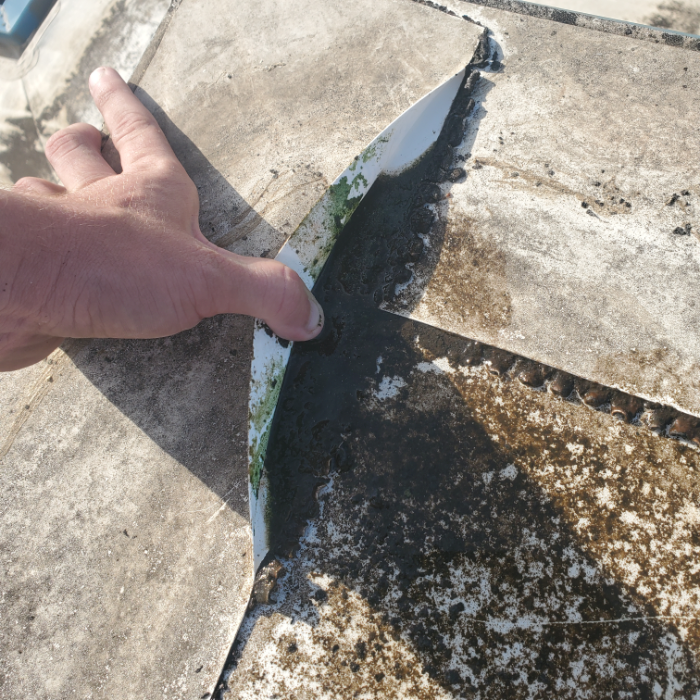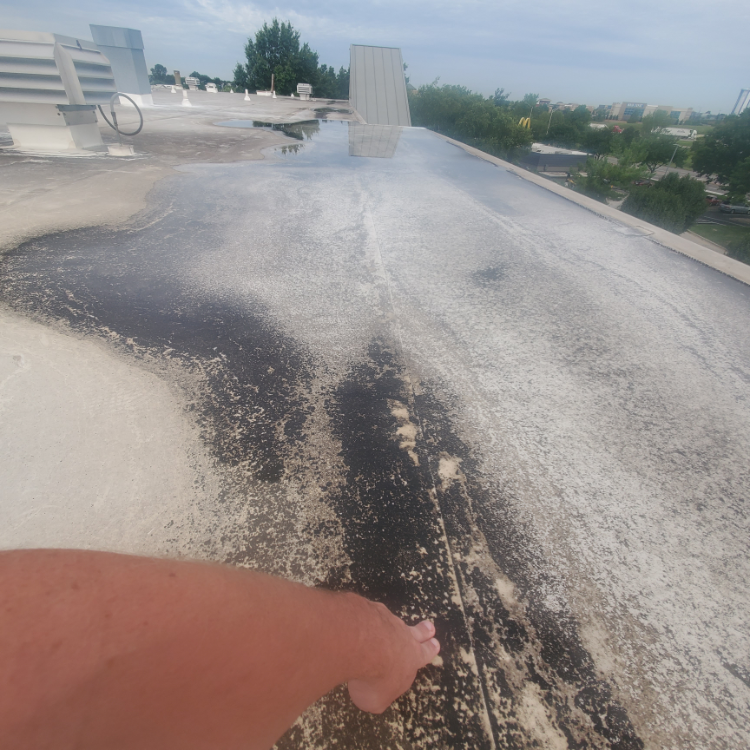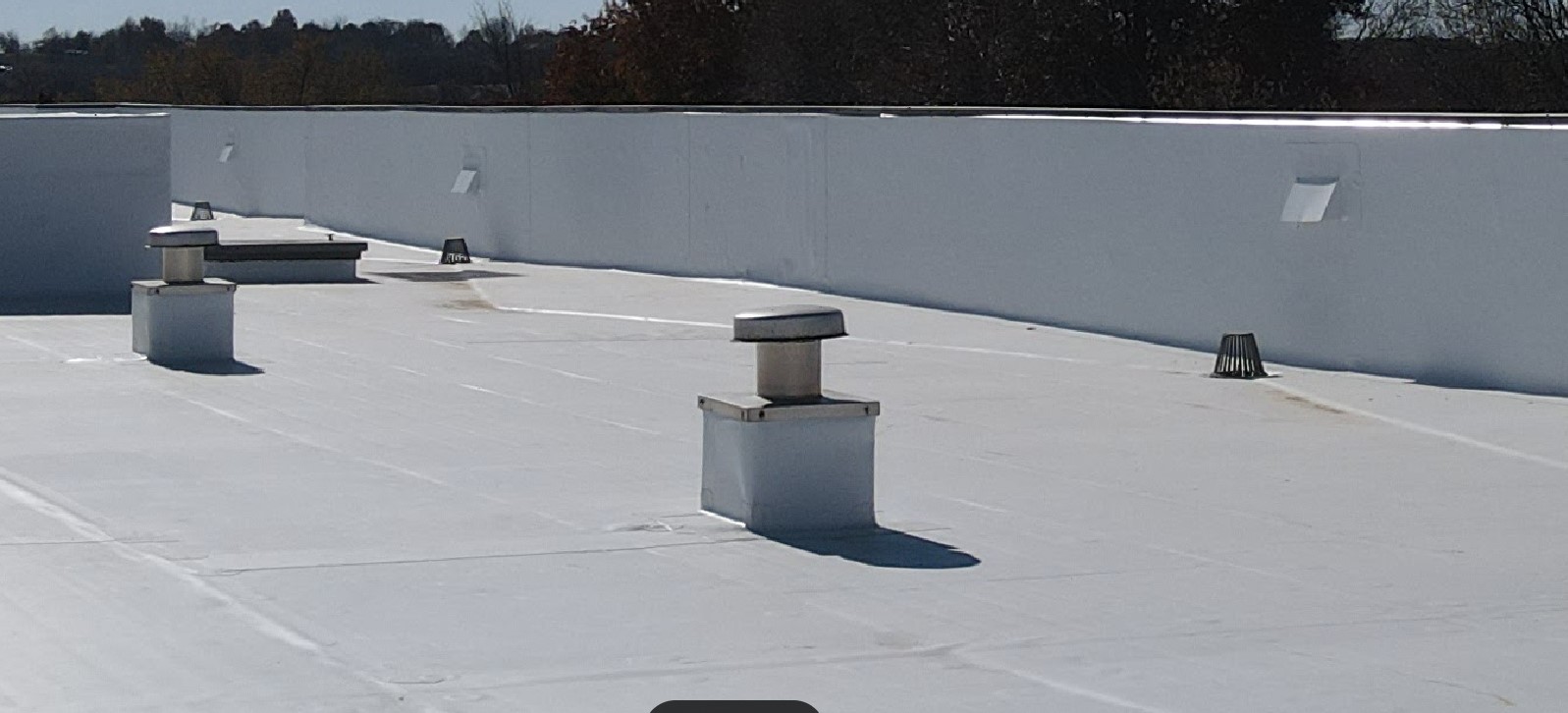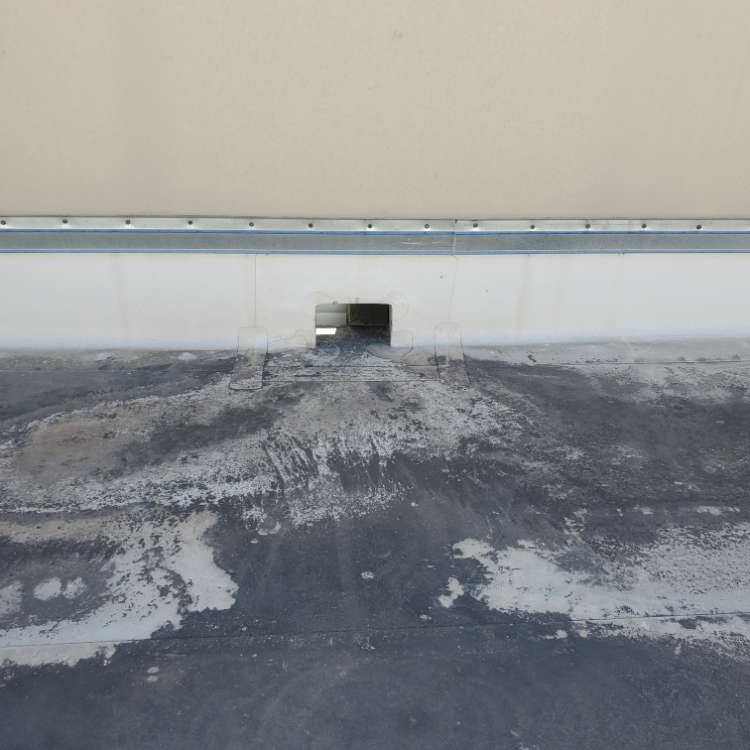Unlike asphalt shingle roof systems that are designed to only shed water, low-slope roof systems must be waterproof. However, all low-slope roofs should still have some slope to them to prevent water from ponding.
Ponding Water
Some ponding water, or water that is unable to drain effectively and pools on the roof surface, is to be expected. But if ponding water occurs in an amount that is unable to evaporate 24-48 hours after a rain event, it may be significant enough to cause problems.
Even low-slope roof membranes are not meant to be covered with water for long periods. Over time, larger areas of ponding water can even result in a decreased service life of the roof system. Ponding water promotes algae growth and dirt accumulation and will prematurely break down any type of low-slope roof covering.
To ensure that a given roof system’s life is maximized, proper drainage can be achieved through a combination of the following:
Tapered Insulation Design
On low-slope roof systems that are not sloped structurally, tapered or sloped insulation beneath the membrane surface is needed. A good rule of thumb for slope is ¼” per foot. There are typically a couple of different ways in which insulation tapers can be designed and installed for any given roof system, so make sure to evaluate all available options based on effectiveness and cost.
Crickets
Crickets are another form of tapered insulation that are commonly installed in between drains, on the uphill side of any rooftop-mounted units (RTUs), or any other area on the roof where the standard drainage might not be adequate. Crickets ensure that all water flowing to these areas is diverted to a proper channel where it can flow to a roof drain.
It’s important that the tapered insulation and cricket designs are incorporated in tandem so that both work together seamlessly to ensure proper water drainage.
Floor Drains and Scuppers
Roof floor drains are cut into the surface of the roof, sealed around the perimeter, and contain a flange that is heat welded to the field membrane. Water enters and follows the drain until it exits the building
Scuppers are located at the bottom of roof parapet walls. They are effectively openings that allow water to pass through, most commonly into external guttering.
Clogging of roof drains can result in ponding water if left unchecked, which can ultimately reduce the lifespan of the roof. If severe enough, the weight of the water can begin to cause structural issues.
Summary
Hopefully this information helps to convey the importance of roof drainage and the components necessary to achieve proper roof drainage. Please note that clogged drains or other neglected roof maintenance items can cause even the best roof drainage system to fail. If you have any concerns about drainage on your building’s roof system, please give us a call!






